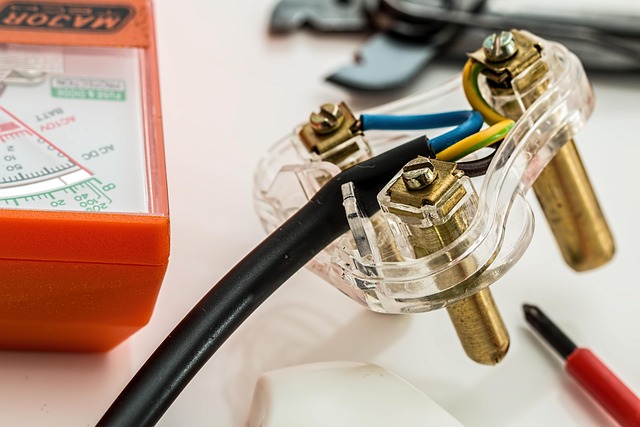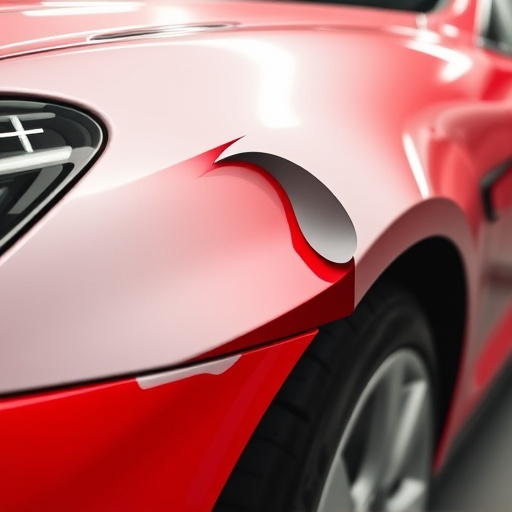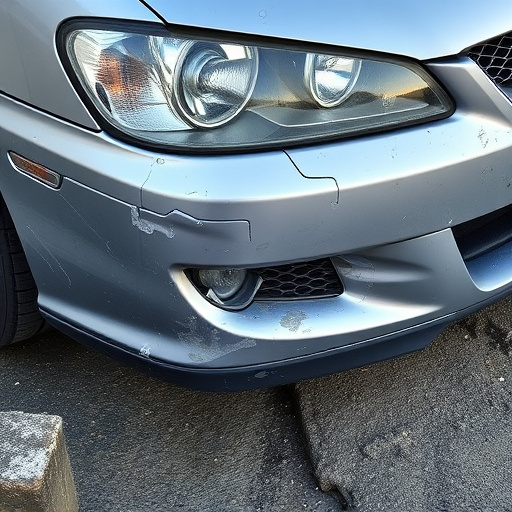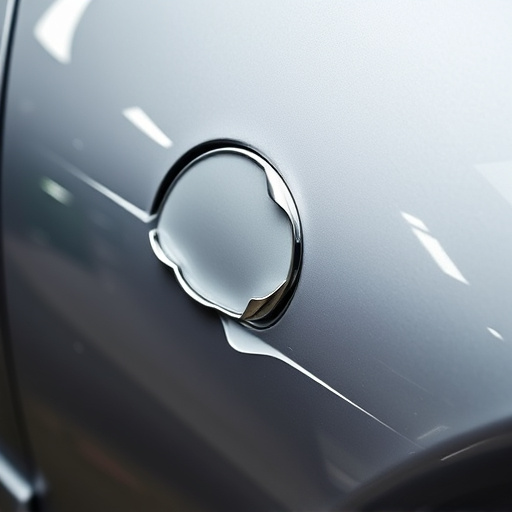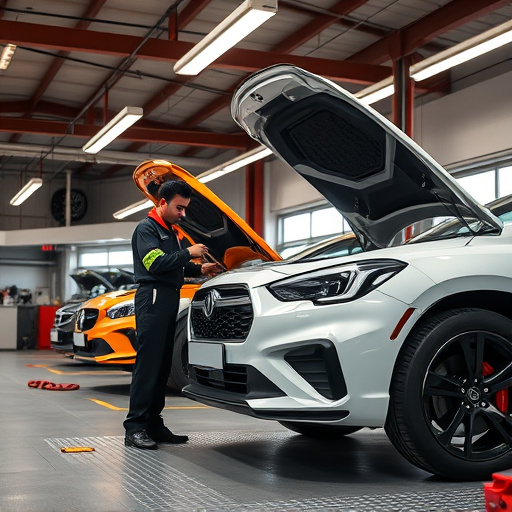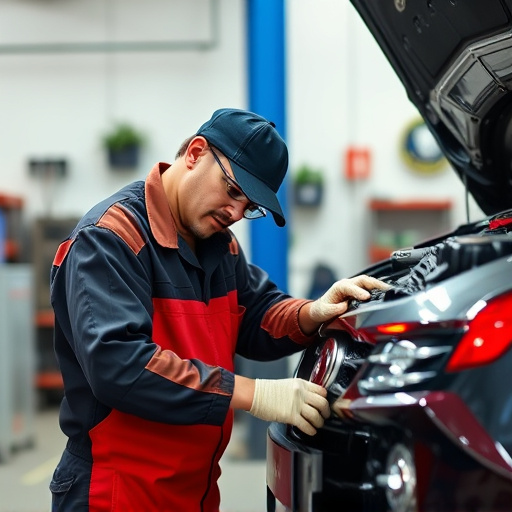The automotive industry shifts towards composite materials like carbon fiber and glass fiber reinforced plastics, reshaping vehicle manufacturing for efficiency and design. Composite material replacement offers luxury cars enhanced durability, lighter weight, corrosion resistance, and flexibility. Sports cars embrace advanced composites for superior strength-to-weight ratios, improved handling, acceleration, and safety. Despite higher costs and specialized installation, composite materials gain popularity due to aesthetic and performance advantages.
In today’s automotive landscape, composite materials are revolutionizing vehicle manufacturing, particularly in luxury and sports cars. This shift towards advanced composites offers significant advantages, from enhanced performance and lightweight construction to improved safety features. However, replacing traditional materials in these premium segments presents unique challenges. This article explores the rise of composite materials, delves into the benefits and drawbacks of their use in luxury vehicles, and examines how cutting-edge composite solutions are pushing boundaries in high-performance sports cars, shaping the future of automotive innovation through composite material replacement.
- The Rise of Composite Materials in Automotive Industry
- Advantages and Disadvantages of Replacement in Luxury Vehicles
- Sports Cars: Pushing Boundaries with Advanced Composite Solutions
The Rise of Composite Materials in Automotive Industry

The automotive industry has witnessed a significant shift towards composite materials as a game-changer in vehicle manufacturing. This trend is particularly evident in luxury and sports vehicles where aesthetics, performance, and lightweight construction are paramount. Composite materials, such as carbon fibre and glass fibre reinforced plastics, offer unparalleled strength-to-weight ratios compared to traditional metals like steel and aluminium. Their unique properties make them ideal for creating sleek, lightweight car bodywork that enhances fuel efficiency and vehicle dynamics.
The adoption of composite materials in the automotive sector has been driven by several factors. Firstly, the demand for more efficient and environmentally friendly vehicles has prompted manufacturers to explore alternative materials. Secondly, advanced composites enable more intricate and complex designs, allowing for innovative aesthetics and structural configurations. This evolution is particularly noticeable in vehicle restoration and auto repair shops that specialise in luxury car bodywork, where composite material replacement parts offer both enhanced performance and visual appeal.
Advantages and Disadvantages of Replacement in Luxury Vehicles

Composite material replacement is revolutionizing luxury vehicles, offering both advantages and disadvantages compared to traditional materials. One key benefit is enhanced durability; composite materials are lighter yet stronger, reducing overall vehicle weight and improving fuel efficiency. They also provide exceptional resistance to corrosion, a common issue with metal parts, ensuring the vehicle’s exterior remains pristine for longer. Additionally, composite material replacement allows for more design flexibility, enabling car manufacturers to create unique, eye-catching body styles and shapes that were previously unattainable.
However, there are challenges associated with composite material replacement in luxury vehicles. The initial cost of composite materials can be significantly higher than conventional parts, making the process less accessible for budget-conscious consumers. Moreover, specialized tools and training are often required for accurate installation, which may limit accessibility at standard collision repair shops. Car dent removal and vehicle paint repair techniques need to adapt to composites, ensuring precise alignment and seamless finishes. Despite these challenges, as composite materials continue to evolve, their integration in luxury vehicles is set to become more common, offering both aesthetic and performance benefits that cater to the high standards of this market segment.
Sports Cars: Pushing Boundaries with Advanced Composite Solutions

Sports cars have always been at the forefront of automotive innovation, pushing the boundaries of performance and design. In recent years, the shift towards composite material replacement has revolutionized the way these high-performance vehicles are constructed. Advanced composites offer unparalleled strength-to-weight ratios, enabling engineers to create lighter, more efficient bodies that enhance handling and acceleration without compromising safety.
This trend is evident in luxury and sports vehicle manufacturing, where composite solutions are increasingly preferred over traditional metals. Composite materials, such as carbon fiber and kevlar, are not only lightweight but also highly durable, making them ideal for withstanding the rigors of track days and high-speed driving. Moreover, these advanced composites can be molded into complex shapes, allowing designers to achieve aerodynamic profiles and sleek aesthetics that were previously unattainable. This focus on composite material replacement not only improves performance but also sets a new standard for luxury and sports vehicle craftsmanship, ensuring that these vehicles remain at the pinnacle of automotive technology.
The automotive industry’s shift towards composite material replacement, particularly in luxury and sports vehicles, signifies a significant advancement in materials science. This trend offers numerous benefits, such as enhanced performance, lightweight construction, and improved durability. However, challenges like high production costs and specialized manufacturing processes must be addressed. For luxury brands, composite replacements provide an opportunity to elevate craftsmanship and design aesthetics while maintaining exclusivity. In sports cars, advanced composite solutions enable manufacturers to push engineering boundaries, delivering exceptional handling and speed. As the technology matures, we can expect even more innovative composite material replacement applications across various vehicle segments.

